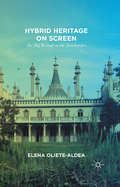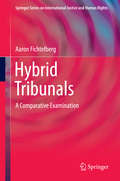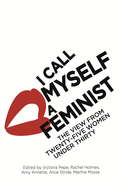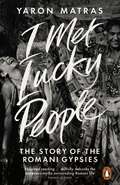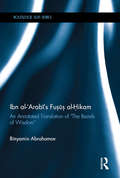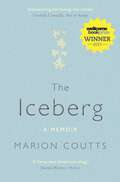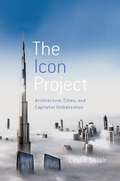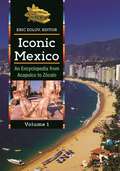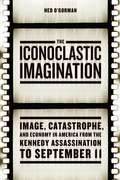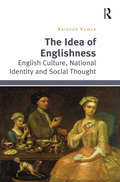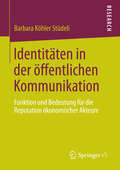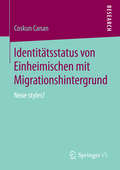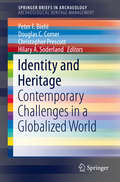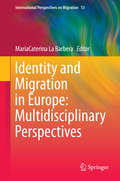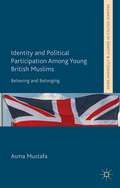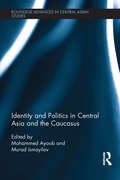- Table View
- List View
Hybrid Heritage on Screen: The ‘Raj Revival’ in the Thatcher Era
by E. Oliete-AldeaHybrid Heritage on Screen provides a long overdue thorough analysis of the 1980s 'Raj Revival'. It examines imperial nostalgia and troubled ethnic, gender and class relations during the Thatcher Era as represented in cinema and television.
Hybrid Tribunals: A Comparative Examination (Springer Series on International Justice and Human Rights)
by Aaron FichtelbergThis book examines hybrid tribunals created in Sierra Leone, Kosovo, Cambodia, East Timor, and Lebanon, in terms of their origins (the political and social forces that led to their creation), the legal regimes that they used, their various institutional structures, and the challenges that they faced during their operations. Through this study, the author looks at both their successes and their shortcomings, and presents recommendations for the formation of future hybrid tribunals.Hybrid tribunals are a form of the international justice where the judicial responsibility is shared between the international community and the local state where they function. These tribunals represent an important bridge between traditional international courts like the International Criminal Court (ICC), the International Criminal Tribunal for the Former Yugoslavia (ICTY), the International Criminal Tribunal for Rwanda (ICTR) and various local justice systems. Because hybrid tribunals are developed in response to large-scale atrocities, these courts are properly considered part of the international criminal justice system. This feature gives hybrid tribunals the accountability and legitimacy often lost in local justice systems; however, by including regional courtroom procedures and personnel, they are integrated into the local justice system in a way that allows a society to deal with its criminals on its own terms, at least in part.This unique volume combines historical and legal analyses of these hybrid tribunals, placing them within a larger historical, political, and legal context. It will be of interest to researchers in Criminal Justice, International Studies, International Law, and related fields.
I Call Myself A Feminist: The View from Twenty-Five Women Under Thirty
by Victoria PepeIs feminism still a dirty word? We asked twenty-five of the brightest, funniest, bravest young women what being a feminist in 2015 means to them.We hear from Laura Bates (of the Everyday Sexism Project), Reni Eddo-Lodge (award-winning journalist and author), Yas Necati (an eighteen-year-old activist), Laura Pankhurst, great-great granddaughter of Emmeline Pankhurst and an activist in her own right, comedian Sofie Hagen, engineer Naomi Mitchison and Louise O'Neill, author of the award-winning feminist Young Adult novel Only Ever Yours. Writing about a huge variety of subjects, we have Martha Mosse and Alice Stride on how they became feminists, Amy Annette addressing the body politic, Samira Shackle on having her eyes opened in a hostel for survivors of acid attacks in Islamabad, while Maysa Haque thinks about the way Islam has informed her feminism and Isabel Adomakoh Young insists that women don't have to be perfect. There are twelve other performers, politicians and writers who include Jade Anouka, Emily Benn, Abigail Matson-Phippard, Hajar J. Woodland and Jinan Younis.Is the word feminist still to be shunned? Is feminism still thought of as anti-men rather than pro-human? Is this generation of feminists - outspoken, funny and focused - the best we've had for long while? Has the internet given them a voice and power previously unknown?Rachel Holmes' most recent book is Eleanor Marx: A Life; Victoria Pepe is a literary scout; Amy Annette is a comedy producer currently working on festivals including Latitude; Alice Stride works for Women's Aid and Martha Mosse is a freelance producer and artist.
I Met Lucky People: The Story of the Romani Gypsies
by Yaron MatrasTheir own origins myths put them at the scene of the Crucifixion, deprived of a home of their own, doomed to a life of wandering, and granted by God the right to steal from other people in order to survive. In the Middle Ages, it was believed they had come out of Egypt. And yet their language shares a number of words with Greek, and has its roots in India. So who are the Romani people, really?As one of the last remaining societies in the Western hemisphere with a strictly oral culture, the Romani people have no written record of their history that can be consulted. From the early 1990s, linguist Yaron Matras has been working with the 'Rom', as they call themselves, one of a handful of people to have done so. Travelling widely in central and eastern Europe, studying their language and learning their dialects, he has witnessed their campaign for recognition. In I Met Lucky People Matras gives us the first comprehensive account of their culture, language and history. It is a story of the echoes of a rich past left in language and customs, and of how the changing fortunes of Europe throughout the centuries have been imprinted on Romani culture.The Romani people are a nation like few others: without territory, national sovereignty or formal institutions, and with no tradition of agriculture or ownership of land. As the wider global society that surrounds them struggles to define itself, what will become of the Roms? Unlike other groups who have won a measure of inclusion in recent decades, they have struggled to have their voice heard. If they are to have a future, it is time we brought our thinking about them out of the dark ages and into the modern world.Yaron Matras is Professor of Linguistics at the University of Manchester, and Editor of the journal Romani Studies. His involvement with Romani issues began in the advocacy and civil rights arena. Matras was media relations officer to the Roma National Congress from 1988-1995, and founding editor of RomNews, one of the very first advocacy information services on Romani issues. He has worked closely with the Open Society Institute's Roma programmes, is a founding member of the European Academic Network on Romani Studies, and has led several large-scale research projects on Romani language and culture, including an international research consortium on Romani migrations. He is the author of over a dozen books and numerous chapters and articles on Romani language and culture, and speaks the Romani language fluently.
Ibn Al-Arabi's Fusus Al-Hikam: An Annotated Translation of "The Bezels of Wisdom" (Routledge Sufi Series)
by Binyamin AbrahamovIbn al-Arabi’s Fusus al-Hikam is a translation of one of the most important works written on Islamic Mysticism. Muhyi al-Din Ibn al-Arabi (1165-1240) is deemed the greatest mystic of Islam and his mystical philosophy has attracted the attention of both Muslims and non-Muslims from his time to the present day. Believing that the world is the self- manifestation of God, he claimed that all religions are equal and that the perfect human being is he who knows all the religious phenomena in the world. Fusus al-hikam examines the singular characteristics of twenty seven prophets of Islam and constitutes the best summary of Ibn al-Arabi's thought. The translation of these twenty seven chapters is preceded by an introduction that explains the main ideas of Ibn al-Arabi and is accompanied by explanatory notes to the text. Providing an easily accessible translation of one of the greatest mystics of Islam, Ibn al Arabi’ Fusus al-Hikam is essential reading for students, scholars and researchers of Islamic Philosophy, Mysticism and Islamic Mysticism in particular.
Ibn Al-Arabi's Fusus Al-Hikam: An Annotated Translation of "The Bezels of Wisdom" (Routledge Sufi Series)
by Binyamin AbrahamovIbn al-Arabi’s Fusus al-Hikam is a translation of one of the most important works written on Islamic Mysticism. Muhyi al-Din Ibn al-Arabi (1165-1240) is deemed the greatest mystic of Islam and his mystical philosophy has attracted the attention of both Muslims and non-Muslims from his time to the present day. Believing that the world is the self- manifestation of God, he claimed that all religions are equal and that the perfect human being is he who knows all the religious phenomena in the world. Fusus al-hikam examines the singular characteristics of twenty seven prophets of Islam and constitutes the best summary of Ibn al-Arabi's thought. The translation of these twenty seven chapters is preceded by an introduction that explains the main ideas of Ibn al-Arabi and is accompanied by explanatory notes to the text. Providing an easily accessible translation of one of the greatest mystics of Islam, Ibn al Arabi’ Fusus al-Hikam is essential reading for students, scholars and researchers of Islamic Philosophy, Mysticism and Islamic Mysticism in particular.
The Iceberg: A Memoir
by Marion CouttsTHE WINNER OF THE 2015 WELLCOME BOOK PRIZE SHORTLISTED FOR THE SAMUEL JOHNSON PRIZE, 2014SHORTLISTED FOR THE COSTA BOOK AWARDS, 2014 (BIOGRAPHY / MEMOIR CATEGORY) SHORTLISTED FOR THE DUFF COOPER PRIZELONGLISTED FOR THE GUARDIAN FIRST BOOK AWARD, 2014In 2008 the art critic Tom Lubbock was diagnosed with a brain tumour. The tumour was located in the area controlling speech and language, and would eventually rob him of the ability to speak. He died early in 2011. Marion Coutts was his wife.In short bursts of beautiful, textured prose, Coutts describes the eighteen months leading up to her partner's death. This book is an account of a family unit, man, woman, young child, under assault, and how the three of them fought to keep it intact.Written with extraordinary narrative force and power, The Iceberg is almost shocking in its rawness. It charts the deterioration of Tom's speech even as it records the developing language of his child. Fury, selfishness, grief, indignity and impotence are all examined and brought to light.Yet out of this comes a rare story about belonging, an 'adventure of being and dying'. This book is a celebration of each other, friends, family, art, work, love and language.
The Icon Project: Architecture, Cities, and Capitalist Globalization
by Leslie SklairIn the last quarter century, a new form of iconic architecture has appeared throughout the world's major cities. Typically designed by globe-trotting "starchitects" or by a few large transnational architectural firms, these projects are almost always funded by the private sector in the service of private interests. Whereas in the past monumental architecture often had a strong public component, the urban ziggurats of today are emblems and conduits of capitalist globalization. In The Icon Project, Leslie Sklair focuses on ways in which capitalist globalization is produced and represented all over the world, especially in globalizing cities. Sklair traces how the iconic buildings of our era-elaborate shopping malls, spectacular museums, and vast urban megaprojects--constitute the triumphal "Icon Project" of contemporary global capitalism, promoting increasing inequality and hyperconsumerism. Two of the most significant strains of iconic architecture--unique icons recognized as works of art, designed by the likes of Gehry, Foster, Koolhaas, and Hadid, as well as successful, derivative icons that copy elements of the starchitects' work--speak to the centrality of hyperconsumerism within contemporary capitalism. Along with explaining how the architecture industry organizes the social production and marketing of iconic structures, he also shows how corporations increasingly dominate the built environment and promote the trend towards globalizing, consumerist cities. The Icon Project, Sklair argues, is a weapon in the struggle to solidify capitalist hegemony as well as reinforce transnational capitalist control of where we live, what we consume, and how we think.
Iconic Mexico [2 volumes]: An Encyclopedia from Acapulco to Zócalo [2 volumes]
by Eric ZolovGoing far beyond basic historical information, this two-volume work examines the deep roots of Mexican culture and their meaning to modern Mexico.In this book, readers will find rich, in-depth treatments by renowned as well as up-and-coming scholars on the most iconic people, places, social movements, and cultural manifestations—including food, dress, film, and music—that have given shape and meaning to modern Mexico and its people. Presenting authoritative information written by scholars in a format that is easily accessible to general audiences, this book serves as a useful and thorough reference tool for all readers.This work combines extensive historical treatment accompanied by illuminating and fresh analysis that will appeal to readers of all levels, from those just exploring the concept of "Mexico" to those already familiar with Mexico and Latin America. Each entry functions as a portal into Mexican history, culture, and politics, while also showing how cultural phenomena have transformed over the years and continue to resonate into today.
Iconic Mexico [2 volumes]: An Encyclopedia from Acapulco to Zócalo [2 volumes]
by Editor Eric ZolovGoing far beyond basic historical information, this two-volume work examines the deep roots of Mexican culture and their meaning to modern Mexico.In this book, readers will find rich, in-depth treatments by renowned as well as up-and-coming scholars on the most iconic people, places, social movements, and cultural manifestations—including food, dress, film, and music—that have given shape and meaning to modern Mexico and its people. Presenting authoritative information written by scholars in a format that is easily accessible to general audiences, this book serves as a useful and thorough reference tool for all readers.This work combines extensive historical treatment accompanied by illuminating and fresh analysis that will appeal to readers of all levels, from those just exploring the concept of "Mexico" to those already familiar with Mexico and Latin America. Each entry functions as a portal into Mexican history, culture, and politics, while also showing how cultural phenomena have transformed over the years and continue to resonate into today.
The Iconoclastic Imagination: Image, Catastrophe, and Economy in America from the Kennedy Assassination to September 11
by Ned O'GormanBloody, fiery spectacles—the Challenger disaster, 9/11, JFK’s assassination—have given us moments of catastrophe that make it easy to answer the “where were you when” question and shape our ways of seeing what came before and after. Why are these spectacles so packed with meaning? In The Iconoclastic Imagination, Ned O’Gorman approaches each of these moments as an image of icon-destruction that give us distinct ways to imagine social existence in American life. He argues that the Cold War gave rise to crises in political, aesthetic, and political-aesthetic representations. Locating all of these crises within a “neoliberal imaginary,” O’Gorman explains that since the Kennedy assassination, the most powerful way to see “America” has been in the destruction of representative American symbols or icons. This, in turn, has profound implications for a neoliberal economy, social philosophy, and public policy. Richly interwoven with philosophical, theological, and rhetorical traditions, the book offers a new foundation for a complex and innovative approach to studying Cold War America, political theory, and visual culture.
The Iconoclastic Imagination: Image, Catastrophe, and Economy in America from the Kennedy Assassination to September 11
by Ned O'GormanBloody, fiery spectacles—the Challenger disaster, 9/11, JFK’s assassination—have given us moments of catastrophe that make it easy to answer the “where were you when” question and shape our ways of seeing what came before and after. Why are these spectacles so packed with meaning? In The Iconoclastic Imagination, Ned O’Gorman approaches each of these moments as an image of icon-destruction that give us distinct ways to imagine social existence in American life. He argues that the Cold War gave rise to crises in political, aesthetic, and political-aesthetic representations. Locating all of these crises within a “neoliberal imaginary,” O’Gorman explains that since the Kennedy assassination, the most powerful way to see “America” has been in the destruction of representative American symbols or icons. This, in turn, has profound implications for a neoliberal economy, social philosophy, and public policy. Richly interwoven with philosophical, theological, and rhetorical traditions, the book offers a new foundation for a complex and innovative approach to studying Cold War America, political theory, and visual culture.
The Iconoclastic Imagination: Image, Catastrophe, and Economy in America from the Kennedy Assassination to September 11
by Ned O'GormanBloody, fiery spectacles—the Challenger disaster, 9/11, JFK’s assassination—have given us moments of catastrophe that make it easy to answer the “where were you when” question and shape our ways of seeing what came before and after. Why are these spectacles so packed with meaning? In The Iconoclastic Imagination, Ned O’Gorman approaches each of these moments as an image of icon-destruction that give us distinct ways to imagine social existence in American life. He argues that the Cold War gave rise to crises in political, aesthetic, and political-aesthetic representations. Locating all of these crises within a “neoliberal imaginary,” O’Gorman explains that since the Kennedy assassination, the most powerful way to see “America” has been in the destruction of representative American symbols or icons. This, in turn, has profound implications for a neoliberal economy, social philosophy, and public policy. Richly interwoven with philosophical, theological, and rhetorical traditions, the book offers a new foundation for a complex and innovative approach to studying Cold War America, political theory, and visual culture.
The Iconoclastic Imagination: Image, Catastrophe, and Economy in America from the Kennedy Assassination to September 11
by Ned O'GormanBloody, fiery spectacles—the Challenger disaster, 9/11, JFK’s assassination—have given us moments of catastrophe that make it easy to answer the “where were you when” question and shape our ways of seeing what came before and after. Why are these spectacles so packed with meaning? In The Iconoclastic Imagination, Ned O’Gorman approaches each of these moments as an image of icon-destruction that give us distinct ways to imagine social existence in American life. He argues that the Cold War gave rise to crises in political, aesthetic, and political-aesthetic representations. Locating all of these crises within a “neoliberal imaginary,” O’Gorman explains that since the Kennedy assassination, the most powerful way to see “America” has been in the destruction of representative American symbols or icons. This, in turn, has profound implications for a neoliberal economy, social philosophy, and public policy. Richly interwoven with philosophical, theological, and rhetorical traditions, the book offers a new foundation for a complex and innovative approach to studying Cold War America, political theory, and visual culture.
The Iconoclastic Imagination: Image, Catastrophe, and Economy in America from the Kennedy Assassination to September 11
by Ned O'GormanBloody, fiery spectacles—the Challenger disaster, 9/11, JFK’s assassination—have given us moments of catastrophe that make it easy to answer the “where were you when” question and shape our ways of seeing what came before and after. Why are these spectacles so packed with meaning? In The Iconoclastic Imagination, Ned O’Gorman approaches each of these moments as an image of icon-destruction that give us distinct ways to imagine social existence in American life. He argues that the Cold War gave rise to crises in political, aesthetic, and political-aesthetic representations. Locating all of these crises within a “neoliberal imaginary,” O’Gorman explains that since the Kennedy assassination, the most powerful way to see “America” has been in the destruction of representative American symbols or icons. This, in turn, has profound implications for a neoliberal economy, social philosophy, and public policy. Richly interwoven with philosophical, theological, and rhetorical traditions, the book offers a new foundation for a complex and innovative approach to studying Cold War America, political theory, and visual culture.
The Iconoclastic Imagination: Image, Catastrophe, and Economy in America from the Kennedy Assassination to September 11
by Ned O'GormanBloody, fiery spectacles—the Challenger disaster, 9/11, JFK’s assassination—have given us moments of catastrophe that make it easy to answer the “where were you when” question and shape our ways of seeing what came before and after. Why are these spectacles so packed with meaning? In The Iconoclastic Imagination, Ned O’Gorman approaches each of these moments as an image of icon-destruction that give us distinct ways to imagine social existence in American life. He argues that the Cold War gave rise to crises in political, aesthetic, and political-aesthetic representations. Locating all of these crises within a “neoliberal imaginary,” O’Gorman explains that since the Kennedy assassination, the most powerful way to see “America” has been in the destruction of representative American symbols or icons. This, in turn, has profound implications for a neoliberal economy, social philosophy, and public policy. Richly interwoven with philosophical, theological, and rhetorical traditions, the book offers a new foundation for a complex and innovative approach to studying Cold War America, political theory, and visual culture.
The Idea of Englishness: English Culture, National Identity and Social Thought
by Krishan KumarIdeas of Englishness, and of the English nation, have become a matter of renewed interest in recent years as a result of threats to the integrity of the United Kingdom and the perceived rise of that unusual thing, English nationalism. Interrogating the idea of an English nation, and of how that might compare with other concepts of nationhood, this book enquires into the origins of English national identity, partly by questioning the assumption of its long-standing existence. It investigates the role of the British empire - the largest empire in world history - in the creation of English and British identities, and the results of its disappearance. Considering the ’myths of the English’ - the ideas and images that the English and others have constructed about their history and their sense of themselves as a people - the distinctiveness of English social thought (in comparison with that of other nations), the relationship between English and British identity and the relationship of Englishness to Europe, this wide-ranging, comparative and historical approach to understanding the particular nature of Englishness and English national identity, will appeal to scholars of sociology, cultural studies and history with interests in English and British national identity and debates about England’s future place in the United Kingdom.
The Idea of Englishness: English Culture, National Identity and Social Thought
by Krishan KumarIdeas of Englishness, and of the English nation, have become a matter of renewed interest in recent years as a result of threats to the integrity of the United Kingdom and the perceived rise of that unusual thing, English nationalism. Interrogating the idea of an English nation, and of how that might compare with other concepts of nationhood, this book enquires into the origins of English national identity, partly by questioning the assumption of its long-standing existence. It investigates the role of the British empire - the largest empire in world history - in the creation of English and British identities, and the results of its disappearance. Considering the ’myths of the English’ - the ideas and images that the English and others have constructed about their history and their sense of themselves as a people - the distinctiveness of English social thought (in comparison with that of other nations), the relationship between English and British identity and the relationship of Englishness to Europe, this wide-ranging, comparative and historical approach to understanding the particular nature of Englishness and English national identity, will appeal to scholars of sociology, cultural studies and history with interests in English and British national identity and debates about England’s future place in the United Kingdom.
Identitäten in der öffentlichen Kommunikation: Funktion und Bedeutung für die Reputation ökonomischer Akteure
by Barbara Köhler StüdeliBarbara Köhler Stüdeli legt mit dem vorliegenden Band die erste explorative Studie vor, die die mediale Identitätsdarstellung öffentlicher Akteure empirisch untersucht und ihren Einfluss auf die Reputation von Organisationen und Management analysiert. Auf der Grundlage soziologischer und psychologischer Identitätstheorien erarbeitet sie Funktionen und Bedeutung von Identitätspräsentation und -wahrnehmung und legt dar, welche Reputationsrisiken aufgrund der medialen Darstellungslogiken für die Identitätsrezeption öffentlicher Akteure bestehen.
Identitätsstatus von Einheimischen mit Migrationshintergrund: Neue styles?
by Coskun CananCoskun Canan untersucht, wie oder unter welchen Bedingungen es Einheimischen mit Migrationshintergrund gelingt, die in verschiedenen ethnisch-kulturellen Welten leben, sozialstrukturell und sozialkulturell Fuß zu fassen, obwohl sie mit unterschiedlichen und widersprüchlichen Identitätszumutungen konfrontiert werden. Anhand einer fuzzy-set Analyse und mit Hilfe einer Vergleichsanalyse mit illustrativen Fallbeispielen analysiert der Autor mehrdeutige Identitäten am Beispiel der Einheimischen mit türkischem Migrationshintergrund. Aus vielfältigen ethnisch-kulturellen Alltagspraktiken entstehen mehrdeutige Identitäten. Diese entziehen sich klassischen Identitätskategorien der Eindeutigkeit wie sie in Forschung, Medien und Politik aber auch in den Lebenswelten der Menschen häufig verwendet werden.
Identity and Heritage: Contemporary Challenges in a Globalized World (SpringerBriefs in Archaeology)
by Peter F. Biehl Douglas C. Comer Christopher Prescott Hilary A. SoderlandThis book will suggest new agendas for identity and heritage studies by means of presenting contentious issues facing archaeology and heritage management in a globalized world. The book is not only present the variability of heritage objectives and experiences in the New and Old World, and opens a discussion, in a shrinking world, to look beyond national and regional contexts. If the heritage sector and archaeology are to remain relevant in our contemporary world and the near future, there are a number of questions concerning the politics, practices and narratives related to heritage and identity that must be addressed. Questions of relevance in an affluent, cosmopolitan setting are at odds with those relevant for a region emerging from civil war or ethnic strife, or a national minority battling oppression or ethnic cleansing. A premise is that heritage represents a broad scope of empirically and theoretically sound interpretations – that heritage is a response to contemporary forces, as much as data. It is therefore necessary constantly to evaluate what is scientifically accurate as well as what is valid and relevant and what can have a contemporary impact.
Identity and Migration in Europe: Multidisciplinary Perspectives (International Perspectives on Migration #13)
by MariaCaterina La BarberaThis book addresses the impact of migration on the formation and transformation of identity and its continuous negotiations. Its ground is the understanding of identity as a complex social phenomenon resulting from constant negotiations between personal conditions, social relationships, and institutional frameworks. Migrations, understood as dynamic processes that do not end when landing in the host country, offer the best conditions to analyze the construction and transformation of social identities in the postcolonial and globalized societies. Searching for novel epistemologies and methodologies, the research questions here addressed are how identity is negotiated in migration processes, and how these negotiations work in contemporary multiethnic Europe. This edited volume brings to the field a novel convergence of theoretical and empirical approaches by gathering together scholars from different countries of Europe and the Mediterranean area, from different disciplines and backgrounds, challenging the traditional discipline division.
Identity and Political Participation Among Young British Muslims: Believing and Belonging (Palgrave Politics of Identity and Citizenship Series)
by A. MustafaThis book tackles unanswered questions on British Muslims and political participation: What makes religion a salient 'political' identity for young Muslims (over any other identity)? How do young British Muslims identify themselves and how does it relate to their political engagement? A fascinating insight into the lives of young British Muslims.
Identity and Politics in Central Asia and the Caucasus
by Mohammed Ayoob Murad IsmayilovThe multicultural region of Central Eurasia is living through its early post-independence years and as such serves as an ideal case to study and analyse theories of identity and foreign policy in a non-European context. Looking to re-introduce identity as a multidimensional factor informing state behaviour, this book analyses the experiences of the different Central Eurasian states in their post-independence pursuits. The book is structured into two broadly defined sections, with the first half examining the different ways in which the combination of domestic, regional, international and trans-national forces worked to advance one national identity over the others in the states that comprise the region of post-Soviet Central Eurasia. In the second half, chapters analyse the many ways in which identity, once shaped, affected foreign policy behaviours of the regional states, as well as the overall security dynamics in the region. The book also looks at the ways in which identity, by doing so, enjoys an intricate, mutually constitutive relationship with the strategic context in which it bears its effects on the state and the region. Finally, given the special role Russia has historically played in defining the evolutionary trajectory of the regional states, the book discusses the ways in which Russia itself and its post-cold war policies towards its former colonies have been conditioned by factors associated with Russia’s evolving post-Soviet identity. Placing the region firmly within existing theories of identity and state practices, the book will be of interest to students and scholars of Central Asian Politics, Security Studies, Foreign Policy and International Relations.
Identity and Politics in Central Asia and the Caucasus
by Mohammed Ayoob Murad IsmayilovThe multicultural region of Central Eurasia is living through its early post-independence years and as such serves as an ideal case to study and analyse theories of identity and foreign policy in a non-European context. Looking to re-introduce identity as a multidimensional factor informing state behaviour, this book analyses the experiences of the different Central Eurasian states in their post-independence pursuits. The book is structured into two broadly defined sections, with the first half examining the different ways in which the combination of domestic, regional, international and trans-national forces worked to advance one national identity over the others in the states that comprise the region of post-Soviet Central Eurasia. In the second half, chapters analyse the many ways in which identity, once shaped, affected foreign policy behaviours of the regional states, as well as the overall security dynamics in the region. The book also looks at the ways in which identity, by doing so, enjoys an intricate, mutually constitutive relationship with the strategic context in which it bears its effects on the state and the region. Finally, given the special role Russia has historically played in defining the evolutionary trajectory of the regional states, the book discusses the ways in which Russia itself and its post-cold war policies towards its former colonies have been conditioned by factors associated with Russia’s evolving post-Soviet identity. Placing the region firmly within existing theories of identity and state practices, the book will be of interest to students and scholars of Central Asian Politics, Security Studies, Foreign Policy and International Relations.
